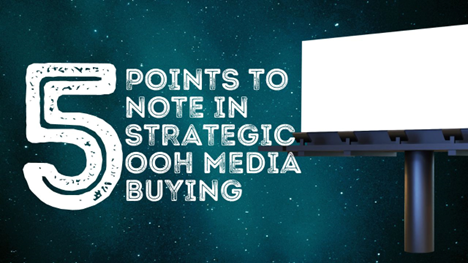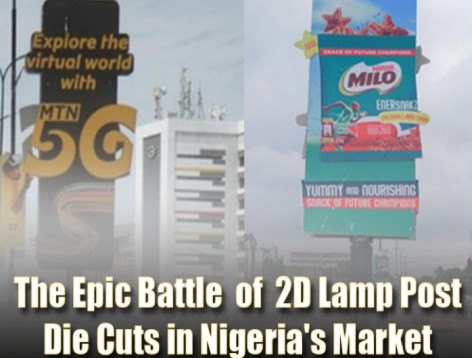
5 Points to Note in Strategic OOH Media Buying
Whether it’s billboards, transit ads, or digital screens, effective OOH media buying requires meticulous strategic planning and a deep understanding of various factors that can influence its success. As a planner or Advertiser, understanding these factors will help deliver value.
Let’s delve into the key considerations and analyses integral to crafting a successful OOH media strategy.
- Location, Location, Location:
The pivotal element in OOH media buying is the strategic placement of advertisements. Location serves as the backbone, determining the visibility and impact of the campaign. Factors like foot traffic, vehicular movement, proximity to key landmarks, and audience relevance play a critical role. Analyzing data on traffic patterns, population density, and consumer behavior in specific areas helps pinpoint optimal locations for maximum exposure.
- Understanding Audience Demographics:
Knowing your audience is fundamental to any advertising strategy. OOH campaigns need to resonate with the demographics frequenting specific locations. Analyzing demographic data such as age, gender, income levels, and lifestyle preferences aids in tailoring the message to appeal directly to the intended audience, enhancing the effectiveness of the campaign.
- Visibility and Creative Messaging:
Visibility is the currency of OOH advertising. Crafting compelling, concise, and visually appealing content is essential to capture attention in fleeting moments. Analyzing the best formats, colors, fonts, and content that align with the brand’s message and resonate with the audience is crucial. Clever and impactful messaging paired with eye-catching visuals can significantly amplify the impact of the campaign.
- Consumer Behaviour and Local Trends:
Staying attuned to consumer behavior and local trends is imperative. Understanding how people interact with their surroundings, their commuting habits, and the trends specific to a region helps in fine-tuning the campaign to be contextually relevant. Harnessing data on emerging trends and cultural nuances can elevate the campaign’s relevance, making it more relatable and engaging for the audience.
- ROI Measurement and Analytics:
Measuring the return on investment (ROI) is a critical part of any advertising campaign, including OOH media. Utilizing analytics tools to track and analyze key performance indicators (KPIs) such as impressions, engagement, foot traffic, and conversion rates allows for real-time adjustments and optimization. This data-driven approach ensures that the campaign remains agile and responsive, maximizing its impact.
So, in the dynamic landscape of OOH media buying, strategic planning is the linchpin that determines the success of campaigns. By considering factors such as location, audience demographics, visibility, creative messaging, consumer behavior, and ROI measurement, advertisers can craft impactful and resonant campaigns that leave a lasting impression on their audience. In this evolving realm, the fusion of data-driven insights with creative ingenuity is the key to unlocking the full potential of out-of-home advertising.

The Dynamic Duo: Digital Out of Home Advertising Enhances Static OOH

Africa to Experience WOO’s First In-Person Africa Forum in Cape Town, SA come March 11-13, 2024

Shining Bright: The Epic Battle of 2D Lamp Post Die Cuts in Nigeria’s Market

The Success Pillars of OOH Campaigns




